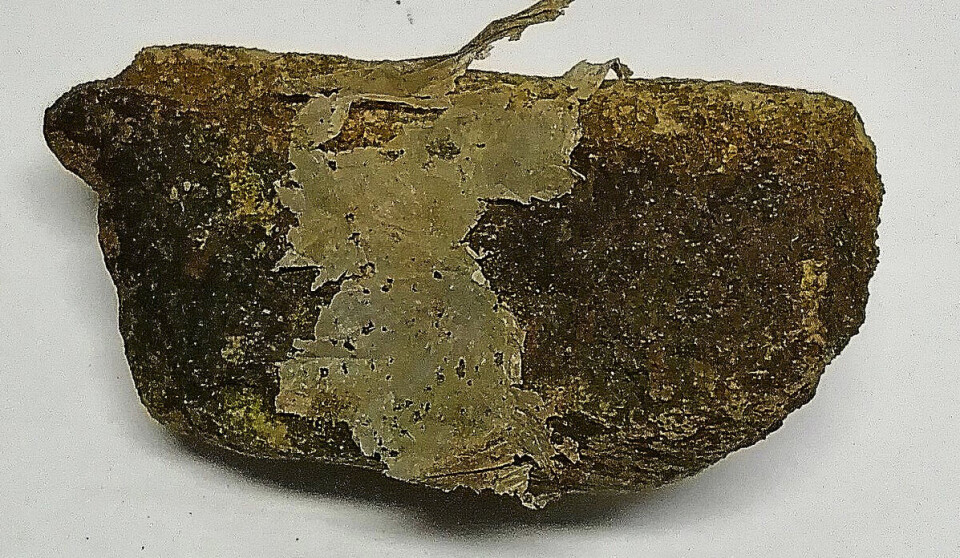THIS ARTICLE/PRESS RELEASE IS PAID FOR AND PRESENTED BY the Institute of Marine Research - read more

Plastic waste and rocks form a chemical bond
'Plastic rocks' create hotspots for microplastic release.
For the first time, scientists have verified that rocks and plastic can form a chemical bond. These plastic covered rocks create hotspots for microplastic release.
“This shows how seriously we are impacting the planet with waste and chemicals,” Michael Bank says.
He is a researcher at the Institute of Marine Research in Norway, and one of the co-authors of this paper.
Plastic waste
The rocks that were investigated were discovered along a creek in Hechi, China.
The plastic films covering the rocks comes from waste in and around the creek. This includes polypropylene films – like those used to make plastic bags, and polyethylene films – like those used by farmers to cover crops.
The chemical bonds between the rock and the plastic may be due to the UV-light from the sun or the microbes on the plastic.
Hotspot
To determine how much these 'plastic rocks' would shed, the researchers ran experimental wet-dry cycles, designed to mimic realistic flooding event conditions.
The study reported that just one square metre of attached plastic debris could release millions of microplastics and billions of nanoplastics into the environment.
“It was a hotspot for microplastic release,” Bank says.
The researchers reported that the rate at which microplastics were generated and released from these plastic-rock complexes was significantly greater than release rates for landfills, seawater, and marine sediments.
Their findings were published in the prestigious scientific journal Environmental Science & Technology.
A physical and chemical threat
Rivers are undoubtedly key ecosystems that connect land and sea.
“Rivers are important vectors for many pollutants, including microplastics and nanoplastics. They link land and sea ecosystems,” says Bank. “River ecosystems can also transfer significant amounts of other critical contaminants to coastal zones, including PFOS-PFOA compounds, mercury, PCBs, and agricultural runoff.”
These plastic particles may pose a chemical and physical threat to floodplain organisms, and biota living down-stream in marine ecosystems.
Managing plastic pollution
Estimations by the United Nations suggest that over 80 per cent of marine plastic pollution originates from land-based sources.
In 2024, world leaders are due to finalise a new international agreement to end plastic pollution.
“It is important to manage the plastic before it gets to the ocean,” Bank says. “Once they get into marine ecosystems, it is nearly impossible to recover it. Once you’re upstream in rivers and ponds, you have a better opportunity.”
References:
Bourzac, K. Plastic waste found chemically bonded to rocks in China, Nature, 2023. DOI: 10.1038/d41586-023-01037-6
Wang et al. Plastic-Rock Complexes as Hotspots for Microplastic Generation. Environmental Science and Technology 57, Environmental Science & Technology, 2023. DOI: 10.1021/acs.est.3c00662

This article/press release is paid for and presented by the Institute of Marine Research
This content is created by the Institute of Marine Research's communication staff, who use this platform to communicate science and share results from research with the public. The Institute of Marine Research is one of more than 80 owners of ScienceNorway.no. Read more here.
See more content from the Institute of Marine Research:
-
These whales have summer jobs as ocean fertilisers
-
Have researchers found the world’s first bamboo coral reef?
-
Herring suffered collective memory loss and forgot about their spawning ground
-
Researchers found 1,580 different bacteria in Bergen's sewage. They are all resistant to antibiotics
-
For the first time, marine researchers have remotely controlled an unmanned vessel from the control room in Bergen
-
New discovery: Cod can adjust to climate change – from one generation to the next




































